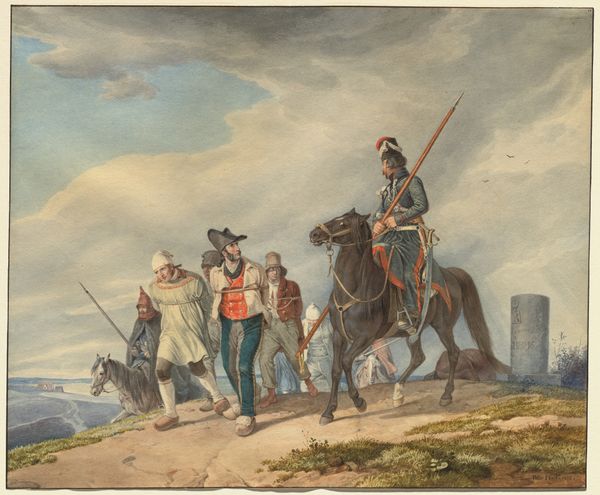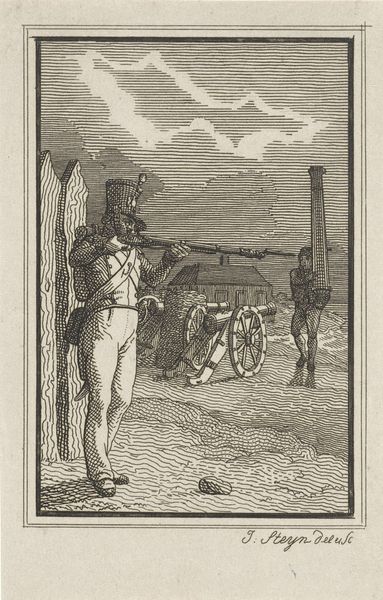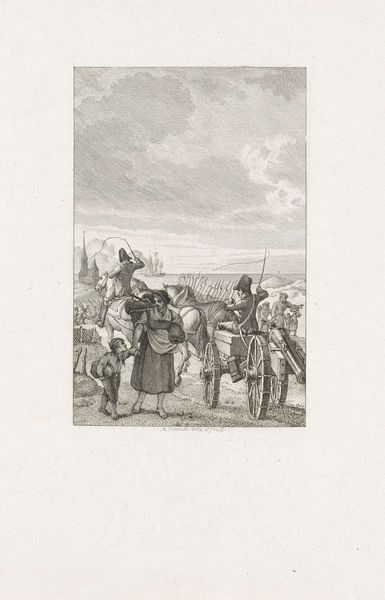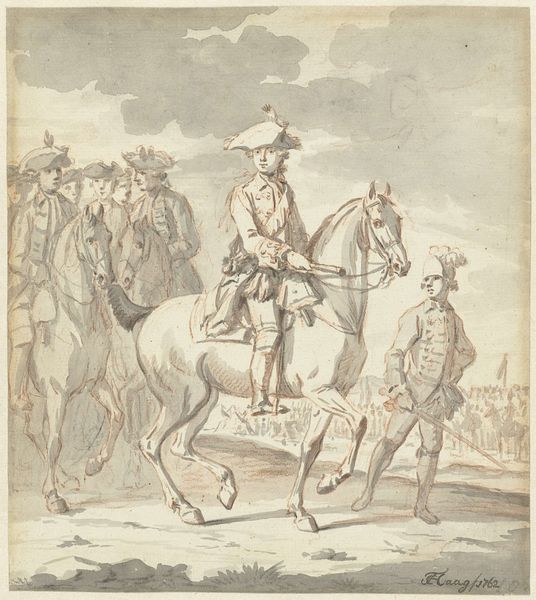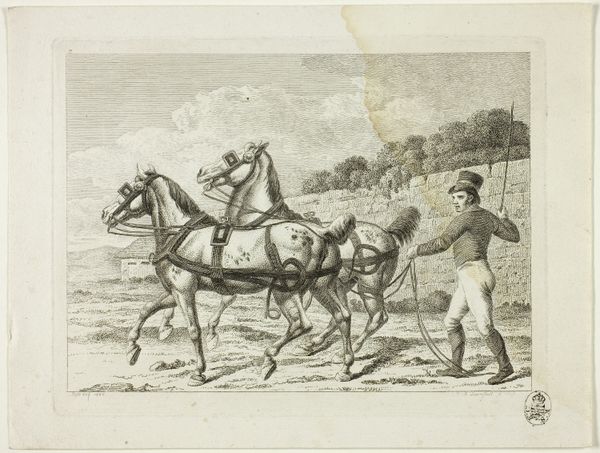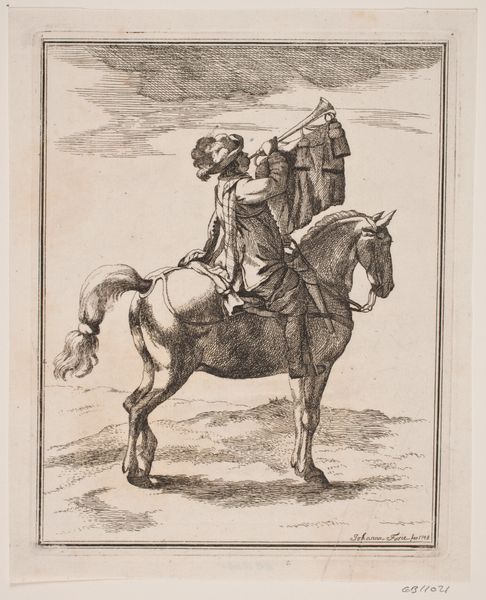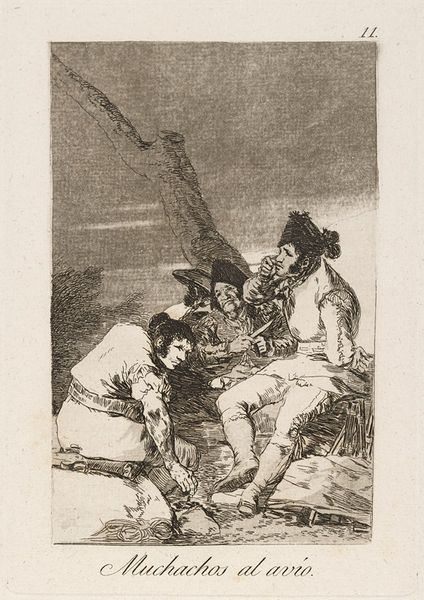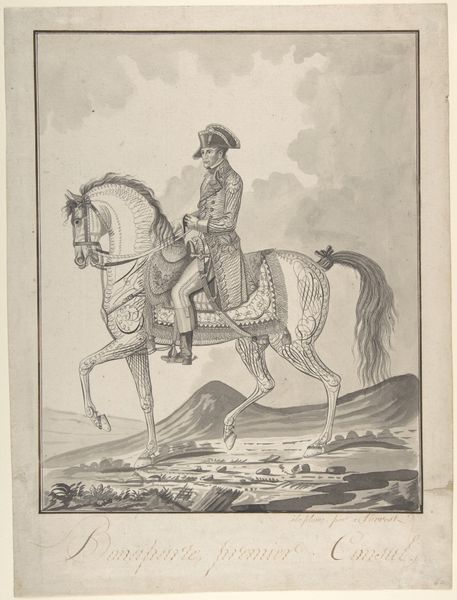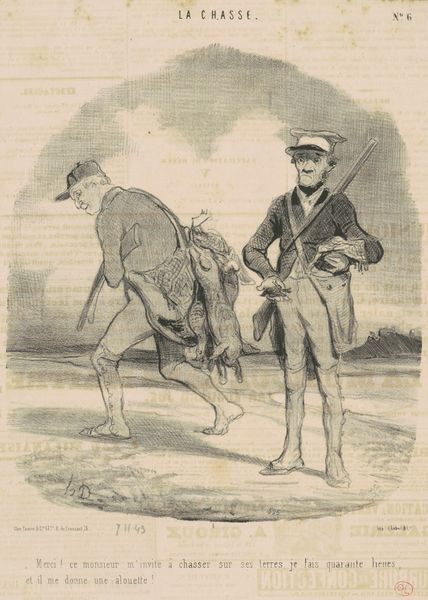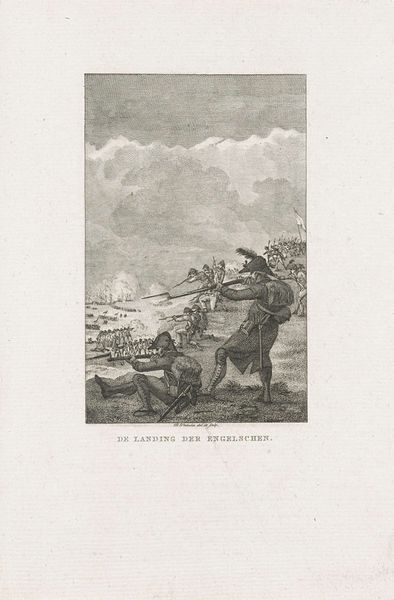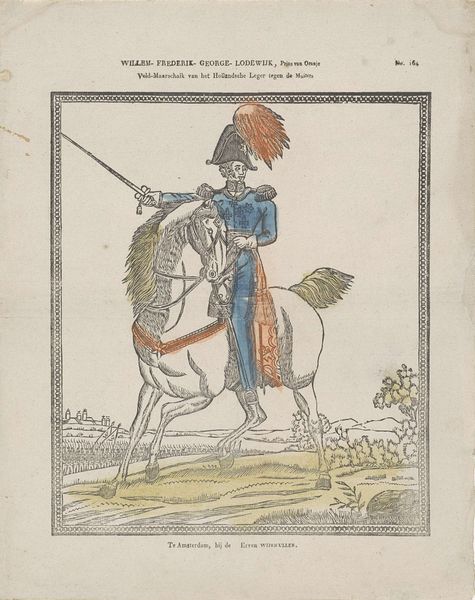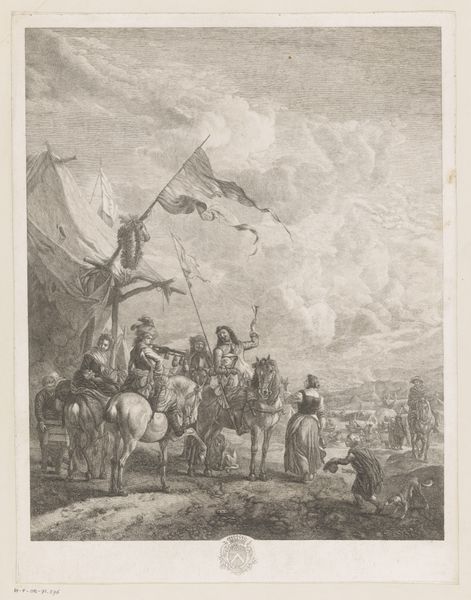
drawing, watercolor
portrait
drawing
pencil sketch
landscape
watercolor
romanticism
watercolour illustration
history-painting
Dimensions: height 198 mm, width 162 mm
Copyright: Rijks Museum: Open Domain
Curator: Jurriaan Andriessen's "The Generals Napoleon and Berthier," created in 1801, offers an intriguing glimpse into the early Napoleonic era. It's currently held in the collection of the Rijksmuseum. Editor: My first impression is of a landscape sketch, almost hurried in its execution. The cool blues and grays lend a sense of drama to what seems a pivotal moment of observation, perhaps just before battle. The materiality is understated: watercolor and pencil – utilitarian tools for recording a scene quickly. Curator: Indeed. The rapid execution speaks volumes. It challenges notions of meticulous, 'high' art often associated with portraiture. Considering the availability and cost of materials at the time, Andriessen's choice reveals the means of production informing his artistry, doesn't it? Watercolour illustrations like this played a huge part in public perceptions. Editor: Absolutely, this piece functions within a specific cultural moment, particularly how Napoleon crafted his image through commissioned works. Were these types of illustrations intended for wider circulation, impacting popular perception? I’m curious about how its display in locations like the Rijksmuseum today reinforces or reshapes its historical weight. Curator: The institutional display certainly frames it within a grand narrative, imbuing it with the authority of the museum itself. Originally, such sketches might have served more as preliminary studies, informing larger, propagandistic canvases. Andriessen’s work could, then, represent an initial step in a wider image-making machine aimed at shaping political opinion. The visible marks of labor involved in creating this water color sketch are key. Editor: That’s a crucial point. And what about the horses? What did their breeding and care tell about military logistical structures at the time? Or even who owned Andriessen's painting - that affects how it was interpreted, and its later cultural value. Curator: Examining the watercolor and pencilwork also illuminates the artist’s direct relationship with his subject matter and the immediacy of his visual impressions. This diverges from the later, often heavily mediated, portrayals of Napoleon as a romantic hero. It offers a raw, human scale absent in oil canvases. Editor: Looking closer, this seems to capture not just two generals, but the power dynamics and symbolic representation woven into the Napoleonic image-making complex. That's far more interesting than I thought initially! Curator: Precisely. This artwork, both in its historical moment and today, reminds us about the material traces and cultural value of art in historical events. Editor: Agreed, there’s so much to unpack when you think of an artwork, beyond just the romantic portrait it gives at first sight.
Comments
No comments
Be the first to comment and join the conversation on the ultimate creative platform.
